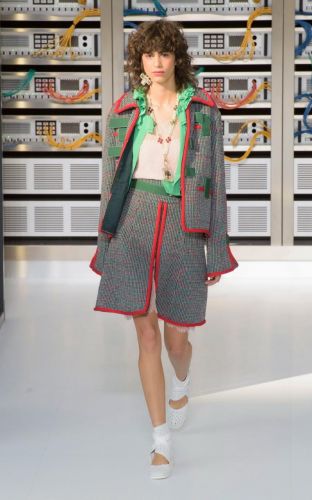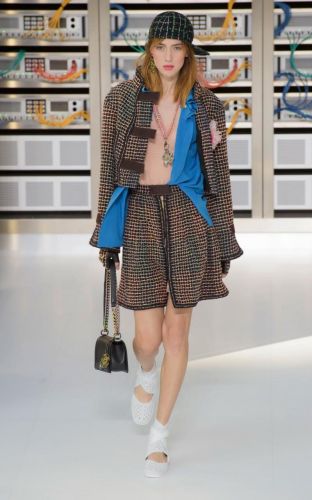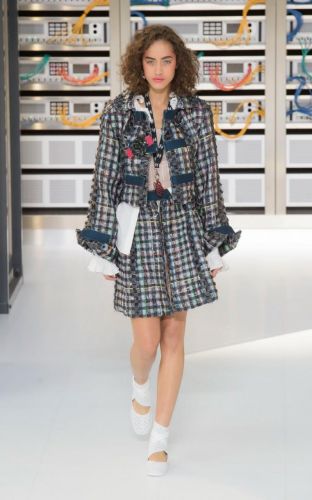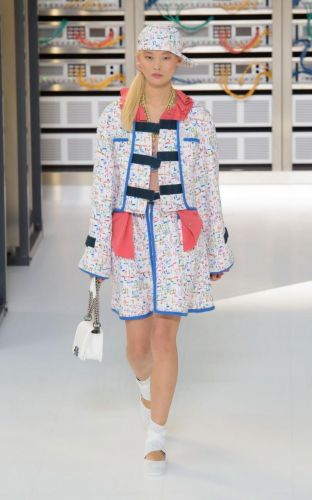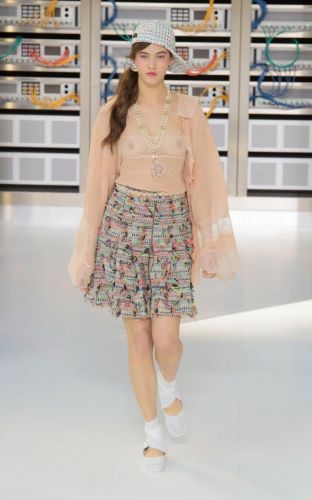After years of increasingly elaborate Chanel sets, including one that replicated the entire city of Havana – oops, sorry, that was Havana – Karl Lagerfeld pulled back his focus from the big wide world and zoomed in on the internal workings of the computer for his latest Paris show.
Of course arguably, the digital vortex is a complex, beautiful universe of its own. The intricate wires and cables, together with all those elements we can’t see but have come to depend on are (gigabytes, storage-clouds, dropboxes…), according to those can visualise or at least sense them, are every bit as lovely in their complexity and logic as the solar system.


Yet the resulting cavernous white interior of the Grand Palais (built circa 1900 at the height of the Belle Epoque, when France was feeling, at least notionally, confident about its place in the world again) seemed rather dystopian in its blankness – even compared with the stark, white space of the generic modern art gallery which Lagerfeld so wittily recreated for a collection a few years back.
The set in the Palais wasn’t completely empty: the somewhat non-plussed audience sat opposite giant banks of digital control panels – a rare sighting of the cogs that make those billions of selfies possible. And then came the models, the first in a classic Chanel suit, circa Jackie Kennedy which was accessorised with a white fiberglass face concealing mask. Was she channeling The Stig (or Le Stig as we say in Paris)? Or was this another chilling throw-forward to a germ-and-CCTV-phobic future?
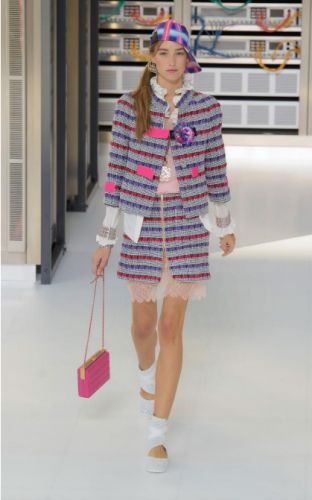
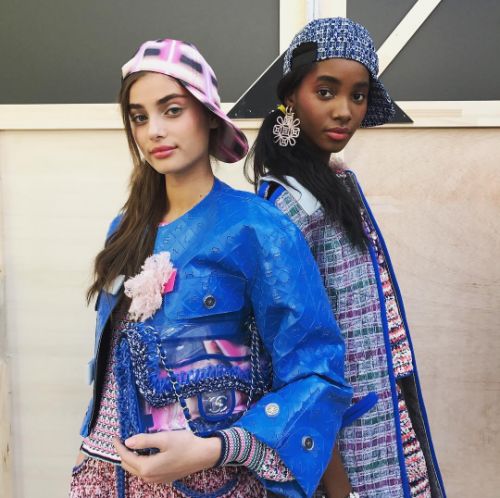
Her colleagues got to wear digitally inspired and created prints – some that looked like the ominous static that precedes a computer melt-down, others that resembled the Big Bang – and tufted boucle jackets that brought to mind the frazzled nerve ends of a cable in distress.
Baseball caps worn sideways were a bourgeois French re-imagining of the kind of Seattle-grunge that techie entrepreneurs wear every day, as were the multi-flecked hoodie coatigans.


It was quite hard to follow the digital thread through this collection at times. How did those stretchy pastel nylon lingerie-skirts and dresses play into the theme for instance? Maybe it’s better this way: the antiseptic glare of the lights and all that white paint concentrated the mind on the clothes and Chanel’s extraordinary workmanship – the semi-sheer white “lab” coats with their whorls of appliqued flowers, the copper “filament” beading on a narrow black skirt and the gossamer- lace slips showing through slashed tweed skirts. The latter were not so much world-wide-web as spider’s web – a reminder that in the digital era, the human touch can’t be beaten.
